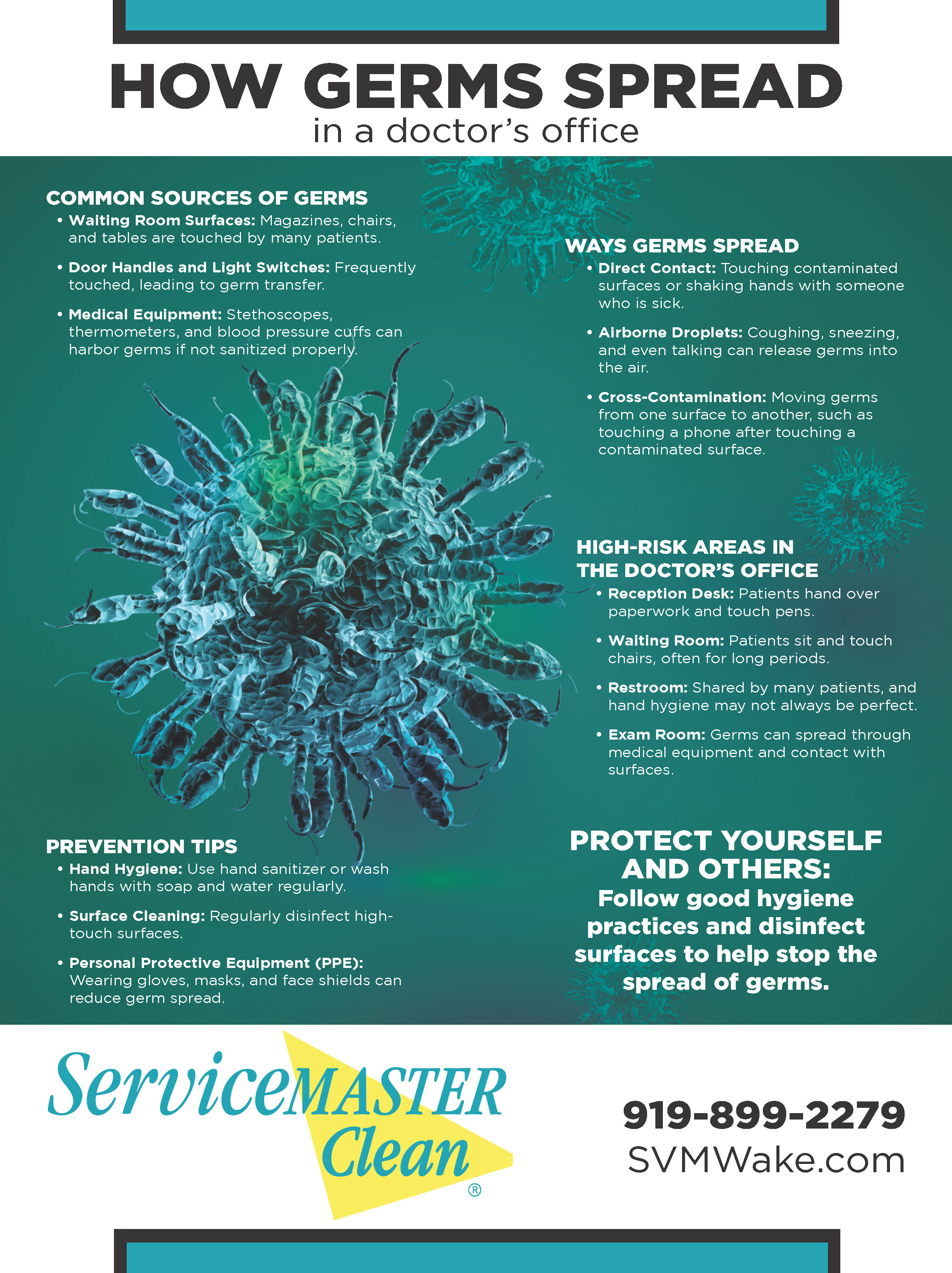Doctor’s offices are meant for healing, but they can also be hotspots for germs! Learn the key ways germs spread through surfaces, air, and contact in medical environments—and what you can do to protect yourself.

Common Sources of Germs
- Waiting Room Surfaces: Magazines, chairs, and tables are touched by many patients.
- Door Handles and Light Switches: Frequently touched, leading to germ transfer.
- Medical Equipment: Stethoscopes, thermometers, and blood pressure cuffs can harbor germs if not sanitized properly.
Ways Germs Spread
- Direct Contact: Touching contaminated surfaces or shaking hands with someone who is sick.
- Airborne Droplets: Coughing, sneezing, and even talking can release germs into the air.
- Cross-Contamination: Moving germs from one surface to another, such as touching a phone after touching a contaminated surface.
High-Risk Areas in the Doctor's Office
- Reception Desk: Patients hand over paperwork and touch pens.
- Waiting Room: Patients sit and touch chairs, often for long periods.
- Restroom: Shared by many patients, and hand hygiene may not always be perfect.
- Exam Room: Germs can spread through medical equipment and contact with surfaces.
Prevention Tips
- Hand Hygiene: Use hand sanitizer or wash hands with soap and water regularly.
- Surface Cleaning: Regularly disinfect high-touch surfaces.
- Personal Protective Equipment (PPE): Wearing gloves, masks, and face shields can reduce germ spread.

